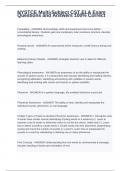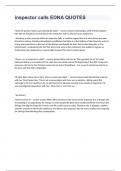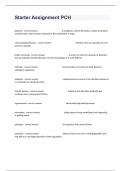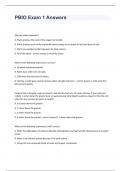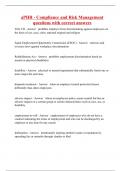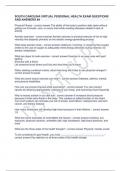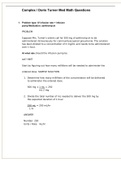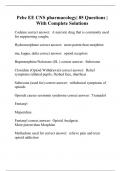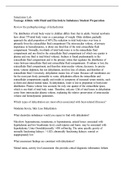Tentamen (uitwerkingen)
NYSTCE Multi-Subject CST ELA Exam Questions and Answers 100% Correct
- Vak
- Instelling
Prereading - ANSWER-All knowledge, skills and experience that come before conventional literacy. Students gain oral vocabulary, learn sentence structure, develop phonological awareness Running record - ANSWER-An assessment which measures a child' fluency during oral reading Balanced Literacy ...
[Meer zien]
